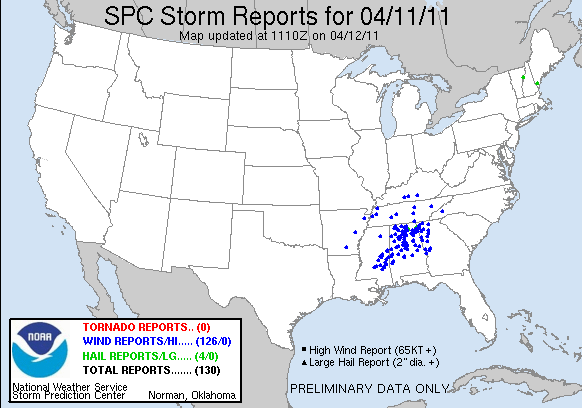To Warn, Or Not To Warn
Forget the issue with TV coverage last night… you can scroll down for my thoughts on that. I double boxed “Dancing With The Stars” simply because I did not believe we had a tornado on the ground.
The issue involves the warning process. Not all tornado warnings are alike; I think long time readers and viewers know that, and understand our point. The event last night was not in the same universe as the tornado disasters that killed many people on April 8, 1998, December 16, 2000, November 24, 2001, etc.
Last night’s situation was a QLCS (quasi linear convective system, or squall line), with potential for damaging straight line winds. Yes, within a line of storms like that you can have small, spin-up tornadoes, but they rarely last more than a few minutes, and are difficult, if not impossible to warn for in most cases. Instead of trying to focus people on small points along the line with a tornado warning, it takes away from the main message that the ENTIRE line is dangerous and capable of producing straight line wind damage. And, yes, there was lots of wind damage.
MY POSITION: Forget the spin-ups. The state of the science is not good enough to adequately warn for these short lived tornadoes, that quite frankly is not all that significant in relationship to the potential for widespread straight line damage from the line of storms. Blanket the line with severe thunderstorm warnings, and make it perfectly clear that small spin up tornadoes are possible within the line.
Last night the NWS in Birmingham took the “whack a mole” approach and tried to warn for spin-ups. The result was a rash of tornado warnings with polygons situated multiple times in the same county and lots of confusion. Below is the SPC storm reports graphic from yesterday and last night…
If you look hard enough, I am sure you will find evidence of damage from a spin-up tornado today, but that graphic clearly tells the story. It was a straight line wind event.
It is my belief that if you warn over and over and over for small spin-ups, when the big events come, like April 8, 1998, nobody will listen because they are so complacent. And, the tornado warnings that come from events last night simply rise the FAR (false alarm ratio). The tornado warning FAR is in the 80 percent range the last time I checked, and in my opinion it is simply too high.
Please understand I have no issue with the NWS… I have talked with my friend Jim Stefkovich, probably the best MIC (Meteorologist In Charge) of a local NWS office in the nation, many times about this, and we simply choose to disagree. Jim not only serves broadcasters, but also the local emergency management community as well, who seem to prefer the warnings for spin-ups. He is doing his job, and I love Jim’s passion and work ethic. Just a difference of opinion on handling these kind of severe weather situations.
BOTTOM LINE: It honestly doesn’t matter what I think, what the emergency management community thinks, or the NWS thinks. It matters what YOU think.
*Should the NWS issue a tornado warning every time they think there might be a small, short lived spin-up tornado a long a line of storms?
*Or, should a situation like last night be handled with severe thunderstorm warnings, with the clear wording that a spin-up is possible?
What say you?
Category: Hodgepodge


















